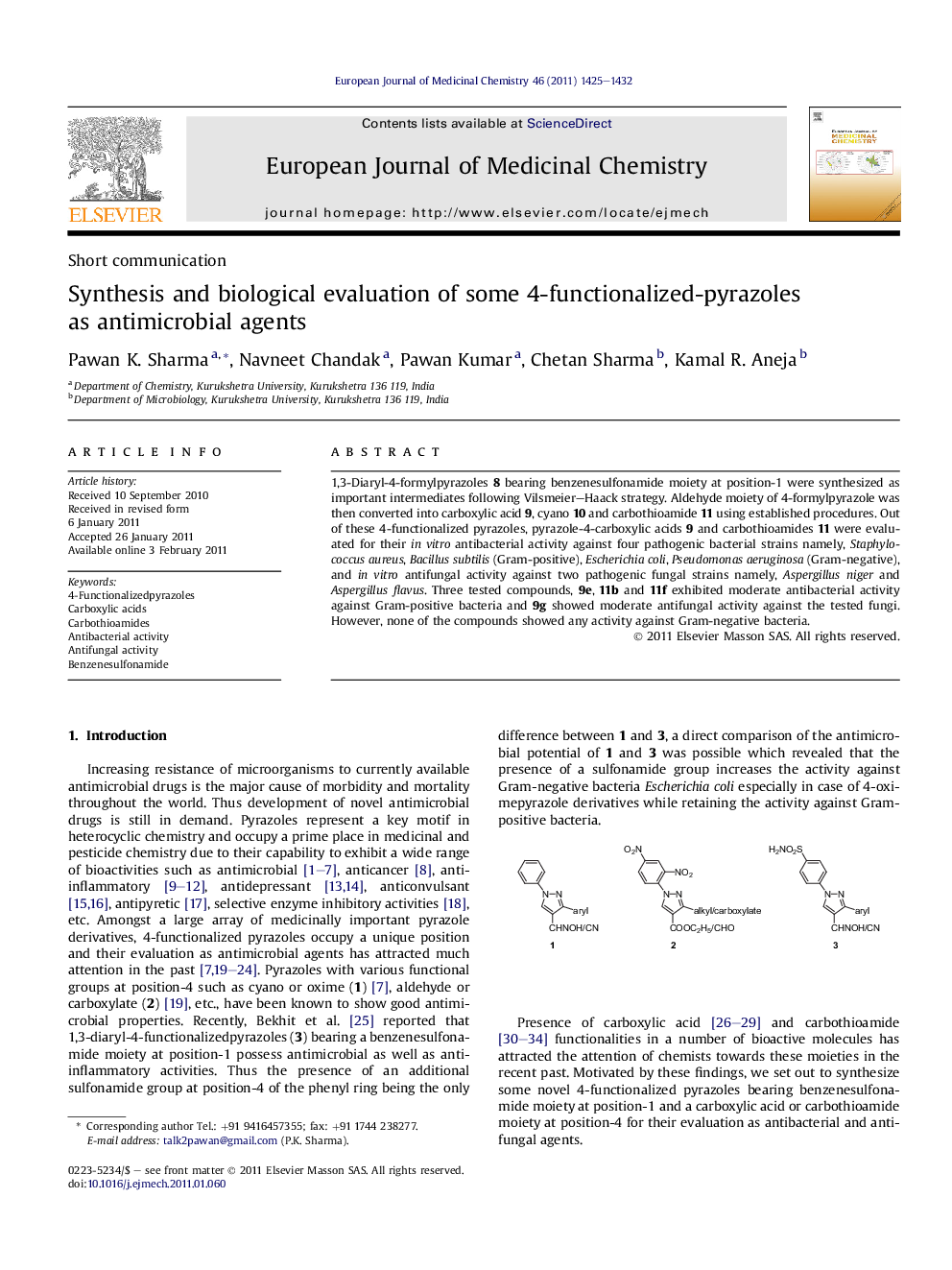| Article ID | Journal | Published Year | Pages | File Type |
|---|---|---|---|---|
| 1397595 | European Journal of Medicinal Chemistry | 2011 | 8 Pages |
1,3-Diaryl-4-formylpyrazoles 8 bearing benzenesulfonamide moiety at position-1 were synthesized as important intermediates following Vilsmeier–Haack strategy. Aldehyde moiety of 4-formylpyrazole was then converted into carboxylic acid 9, cyano 10 and carbothioamide 11 using established procedures. Out of these 4-functionalized pyrazoles, pyrazole-4-carboxylic acids 9 and carbothioamides 11 were evaluated for their in vitro antibacterial activity against four pathogenic bacterial strains namely, Staphylococcus aureus, Bacillus subtilis (Gram-positive), Escherichia coli, Pseudomonas aeruginosa (Gram-negative), and in vitro antifungal activity against two pathogenic fungal strains namely, Aspergillus niger and Aspergillus flavus. Three tested compounds, 9e, 11b and 11f exhibited moderate antibacterial activity against Gram-positive bacteria and 9g showed moderate antifungal activity against the tested fungi. However, none of the compounds showed any activity against Gram-negative bacteria.
Graphical abstractSeries of 1,3-diaryl-4-functionalized pyrazoles bearing benzenesulfonamide moiety at position-1 were synthesized. Newly synthesized pyrazole-4-carboxylic acids and pyrazole-4-carbothioamides were screened for antibacterial and antifungal activities.Figure optionsDownload full-size imageDownload as PowerPoint slideResearch highlights►Synthesis and biological evaluation of two novel series of 4-functionalizedpyrazoles, pyrazole-4-carboxylic acids and pyrazole-4-carbothioamides as potential antimicrobial and antifungal agents. ►Three compounds exhibited moderate antibacterial activity against Gram-positive bacteria and one compound showed moderate antifungal activity against the tested fungi. ► None of the compounds showed any activity against Gram-negative bacteria.
